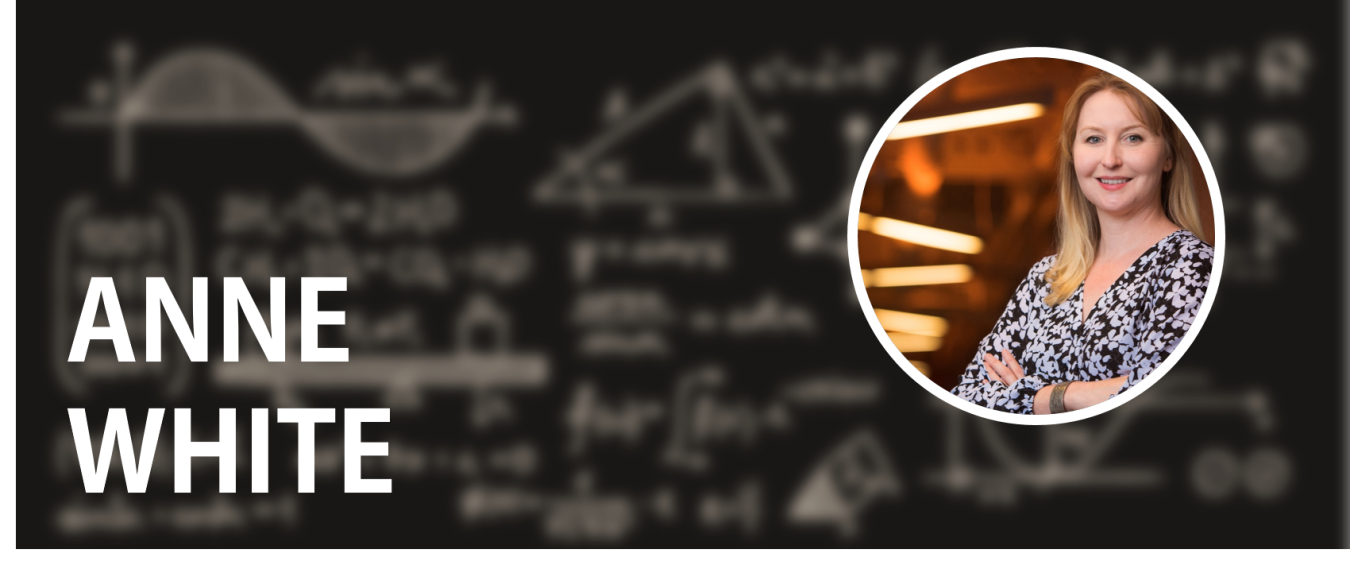Anne White decided to work on one of the hardest and most important challenges in fusion - taming the turbulent conditions inside fusion reactors.
November 8, 2021
WHAT DID THE 2011 EARLY CAREER AWARD ALLOW YOU TO DO?
A decade ago, I wanted to work on the hardest and the most important challenges in fusion. Fusion promises clean and nearly unlimited energy - if we can tame the turbulent conditions inside a 100-million-degree plasma such as that in a fusion reactor.
When I came to MIT, the Alcator C-Mod tokamak – one of the main designs for fusion research facilities - was the unexplored frontier. The local turbulence deep in the core plasma of this compact, high-field, high-performance fusion device had never been measured. In fact, other scientists had tried and failed. New instrumentation and new approaches were needed. I wrote a proposal for the DOE Early Career Research award to design the instruments in a totally new way, using predictive, physics-based numerical simulations. The proposal was funded, and we were able to build the instruments that allowed us to observe — for the first time — the electron temperature fluctuations in the core plasma at C-Mod.
This opened the door to my group and allowed me to expand my vision for “predict-first experiments” to aid in the study and understanding of tokamak turbulence. Predictive models in fusion have made tremendous progress in the last decade. This progress has been driven by strong and sustained support for theory, modeling, and simulation within U.S. Department of Energy (DOE) Fusion Energy Sciences (FES). It has also been driven by FES support for rigorous validation of the models using detailed measurements of the turbulence, which has been the focus of my research
Without the DOE Early Career Research Program award, I would not have been able to build the team of students, postdocs, and collaborators to carry out this validation work. Members of my group have gone on to make several ground-breaking discoveries in the “predict-first” realm, including, the cross-scale coupling of turbulence and solving a 20-year old mystery in tokamak transport The work has come full-circle now. The very same models I have dedicated my early career to validating are being used by scientists to predict the performance in the SPARC tokamak under development at the Massachusetts Institute of Technology.
I am extremely grateful for the Early Career award funding and so very proud of all my students, who were supported by the award, and who are now professors, research scientists, venture capitalists, and industry leaders —who are all working on the next set of grand challenges for fusion.
ABOUT:
Anne White is a professor at the Massachusetts Institute of Technology and Head of the Department of Nuclear Science and Engineering.
SUPPORTING THE DOE SC MISSION:
The Early Career Research Program provides financial support that is foundational to early career investigators, enabling them to define and direct independent research in areas important to DOE missions. The development of outstanding scientists and research leaders is of paramount importance to the Department of Energy Office of Science. By investing in the next generation of researchers, the Office of Science champions lifelong careers in discovery science.
For more information, please go to the Early Career Research Program.
THE 2011 PROJECT ABSTRACT:
Electron Temperature Fluctuation Measurements and Transport Model Validation at Alcator C‐Mod
The objective of this project is to merge experiment and theory by using advanced turbulence simulations to aid in the design of a new turbulence diagnostic system that will be used to test the fundamental physics of turbulent transport in tokamak plasmas. The research project will develop a novel correlation electron cyclotron emission (CECE) diagnostic system for measuring turbulence in the core plasma of the Alcator C‐Mod tokamak at the Massachusetts Institute of Technology (MIT).
Gyrokinetic theory describes how small‐scale turbulent fluctuations are responsible for the observed transport of particles, heat, and momentum in tokamak plasmas. The new and unique data obtained with the CECE diagnostic system will be used in detailed validation studies to probe the limits of gyrokinetic theory and to assess the accuracy of models for turbulent‐driven transport in tokamaks. This diagnostic approach will measure electron temperature fluctuations, which provide direct information about the underlying physics of heat transport. When combined with advanced models and simulations, these data can be used to indirectly probe the turbulent transport of particles, momentum, and energy as well.
This research project aims to transform the traditional approach to testing advanced gyrokinetic turbulence simulations by introducing an innovative method for merging diagnostic development with code validation. This includes using for the first time quantitative predictions of turbulence characteristics to guide the design of a new fluctuation diagnostic system.
RESOURCES:
A.E. White, et al., “Measurements of the cross-phase angle between density and electron temperature fluctuations and comparison with gyrokinetic simulations.” Physics of Plasmas 17, 056103 (2010). [DOI: 10.1063/1.3323084]
A.E. White, “Validation of nonlinear gyrokinetic transport models using turbulence measurements.” Journal of Plasma Physics 85, 925850102 (2018). [DOI: 10.1017/S0022377818001253]
P. Rodriguez-Fernandez, A.E. White, et al., “Predict-first experiments and modeling of perturbative cold pulses in the DIII-D tokamak.” Phys. Plasmas 26, 062503 (2019). [DOI: 10.1063/1.5096800]
DOE Explains… offers straightforward explanations of key words and concepts in fundamental science. It also describes how these concepts apply to the work that the Department of Energy’s Office of Science conducts as it helps the United States excel in research across the scientific spectrum. For more information on fusion and DOE’s research in this area, please go to “DOE Explains… Fusion Energy Science.” For more information on tokamaks and DOE’s research in this area, please go to “DOE Explains… Tokamaks.” For more information on burning plasma and DOE’s research in this area, please go to “DOE Explains… Burning Plasma.”
Additional profiles of the Early Career Research Program award recipients can be found on the Early Career Program Page.
The Office of Science is the single largest supporter of basic research in the physical sciences in the United States and is working to address some of the most pressing challenges of our time. For more information, please visit www.energy.gov/science.
Sandra Allen McLean

Sandra Allen McLean (sandra.mclean@science.doe.gov) is a communications specialist for the Office of Science in the Office of Communications and Public Affairs. Sandra is responsible for identifying, curating, or creating lay-language content about Office of Science-funded research for DOE web sites, popular and trade media, and stakeholder education. She researches and writes the historical Milestone Tweets for the office Twitter account @DOEScience.
Sandra holds an associate degree in American Sign Language interpreting, a bachelor’s in science journalism and biology, and a master’s in Information Sciences. Her hobbies are sewing – especially costumes! – and lesesucht, compounded by extreme tsundoku.


